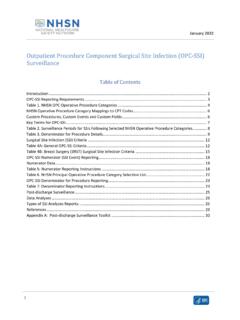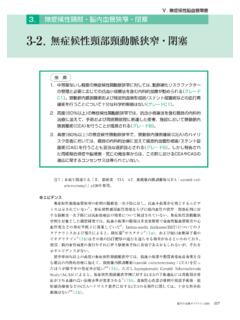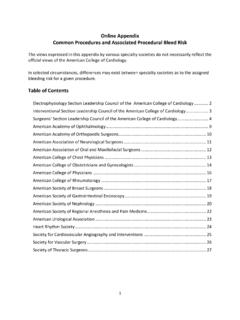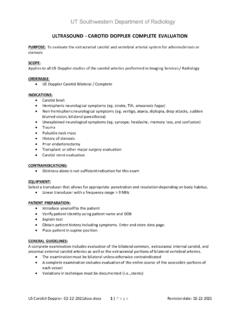Transcription of Scoring fire risk for surgical patients F - OR Manager
1 Fires in the operating room are a risk that requires prevention, vigilance, andquick action to prevent patient injury. To heighten awareness, the ChristianaCare Health System (CCHS) in Newark, Del, has added a surgical fire RiskAssessment Score to its Patient Identification and surgical Site documentation form. What brought this issue to our attention were 2 surgical fires. One occurred inthe electrophysiology lab and the other in the OR with a patient having a carotidendarterectomy. Both cases involved a high concentration of oxygen, surgery abovethe xiphoid, and a heat source, Judith Townsley, RN, MSN, CPAN, director of clin-ical operations for perioperative services, told OR chairman of the anesthesiology department, Kenneth Silverstein, MD, devel-oped the fire risk assessment score after the fires were investigated by ECRI( ), a nonprofit organization that researches health services and tech-nology, and Russell Phillips & Associates ( ), consultants in fire ,code compliance, and emergency management.
2 Assigning a fire risk scoreThe fire risk assessment is performed by the entire surgical team (anesthesiaprovider, surgeon, and nurse) before the incision is made and is documented by the cir-culating nurse, notes Denise Dennison, RN, BSN, CNOR, staff development specialist.(See assessment guide, page 20.)The assessment requires the surgical team to identify the 3 key elements that arenecessary for a fire to start the fire triangle: heat fuel the OR, 3 key risks are: surgical site or incision above the xiphoid open oxygen source (ie, patient receiving supplemental oxygen via face mask ornasal cannula) available ignition source (ie, electrosurgery unit, laser, or fiberoptic light source).In the assessment, each of these risks is given a score of 1. The scores are tabulat-ed to determine a total fire risk score.
3 Score 3 = High risk. All 3 components of the fire triangle are present. Score 2 = Low risk with potential to convert to high risk. This score is givenwhen the procedure is in the thoracic cavity, the ignition source is remote from anopen oxygen source, the ignition source is close to a closed oxygen source, or no sup-plemental oxygen is 1 = Low risk. Only supplemental oxygen is being used. Each risk score has a fire protocol assigned to maximize patient safety (sidebar).The documentation form allows the circulating nurse to indicate that the high-riskprotocol was initiated. It also allows for documentation that sufficient time wasallowed for fumes to dissipate when an alcohol-based prep solution is used. Communication heightens awareness Since adding the fire risk assessment to the OR documentation, communicationamong the surgical team members as well as identification of the fire risk triangle havevastly improved, notes Dennison.
4 The secret to success of this process is that this formal communication and docu-mentation make everyone involved aware of the potential risk of a fire , ManagerVol. 22 No. 1 January 20061 Scoring fire risk for surgical patientsPatient safetyJust recently, Mary Cay Curran, RN, perioperative clinical process coordinator,says she witnessed a discussion between a nurse and surgeon about the fire risk fora patient undergoing an arteriovenous fistula procedure. The surgeon challengedthe nurse s lower fire risk score because of the way the patient s arm was positionedand the fact that the graft was being done in the upper part of the arm. Both agreedthe fire risk was a 3, and the nurse immediately prepared the OR for the higher has also witnessed nurses and surgeons telling the anesthesiologist theyare going to use the ESU, which prompts the anesthesiologist to turn the 100% oxy-gen down for a patient with a high-risk score.
5 Enhancing communication between providers has strengthened our focus onproviding clinical excellence for our patients , says Townsley. v Judith M. Mathias, RN, MAAn ECRI fire prevention poster can be downloaded from the OR Manager Toolbox M E. surgical fires: Perioperative communication is essential to prevent thisrare but devastating complication. Qual Saf Health Care. December 2004;13 H S, Granville R, Aryan H E, et al Gel-based surgical preparation resulting inan operating room fire during a neurosurgical procedure: Case report. 2005;102 ManagerVol. 22 No. 1 January 20062 surgical site fire risk assessment guideAlcohol-based prep solution had sufficient time for fumes to by:oYes oNooNA(Circulating RN signature)(Circle appropriate option) Y N Print name * surgical site or incision above the xiphoid1 0 _____*Open oxygen source (patient receiving supplemental oxygen oHigh Risk fire Protocol initiatedvia any variety of face mask or nasal cannula) 1 0*Available ignition source (ie, electrosurgery unit, laser, fiberoptic light source)1 0 Total scoreScoring: 3 = High risk2 = Low risk w/potential to convert to high risk1 = Low riskComplete this section if risk score increases to 3 during procedureoHigh Risk fire Protocol Initiated Signature/title _____ Print name _____ Time _____Note.
6 This is a section of a form entitled Identification of Patient, Procedure and surgical Side/Sites, and fire Risk Assessment. Source: Christiana Care, Newark, D H, White K W. fire in the operating room during tracheotomy: A case J. April 2005;73 risk protocols Score 3 = High riskThe circulating nurse and anesthesia provider take these nurse Verifies fire triangle, including verbal confirmation of the oxygen percentage Ensures appropriate draping techniques to minimize oxygen concentrationunder the drapes (ie, tenting, incise drape) Minimizes ESU setting Assesses that enough time has been allowed for fumes of alcohol-based prepsolutions to dissipate (minimum of 3 min) Encourages use of wet sponges Ensures a basin of sterile saline and bulb syringe are available for fire provider Ensures that a syringe full of saline is in reach for procedures conducted withinthe oral cavity Documents oxygen concentrations and flows Uses the MAC circuit for oxygen administration initially at FiO2of.
7 30 usingfresh gas flows of at least 12 2 = Low risk with potential to convert to high riskStandard fire safety precautions are followed with the potential to convert tohigh-risk precautions if necessary. Standard precautions are to: observe alcohol-based prep drying times (minimum of 3 min) protect heat sources (eg, using the ESU pencil holster) use standard draping 1 = Low riskStandard fire safety precautions are ManagerVol. 22 No. 1 January 20063 Copyright 2005. OR Manager , Inc. All rights reserved. 800







